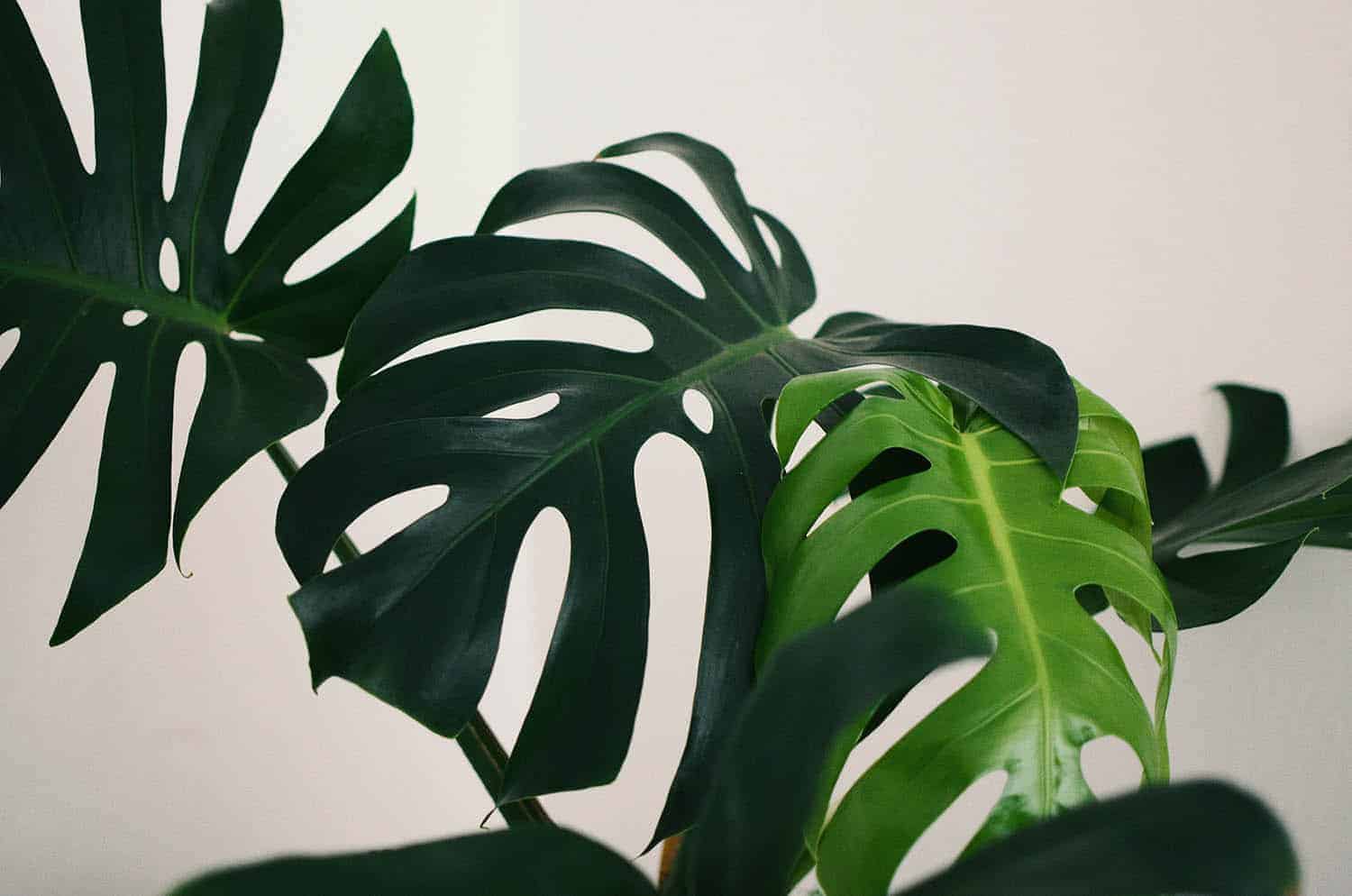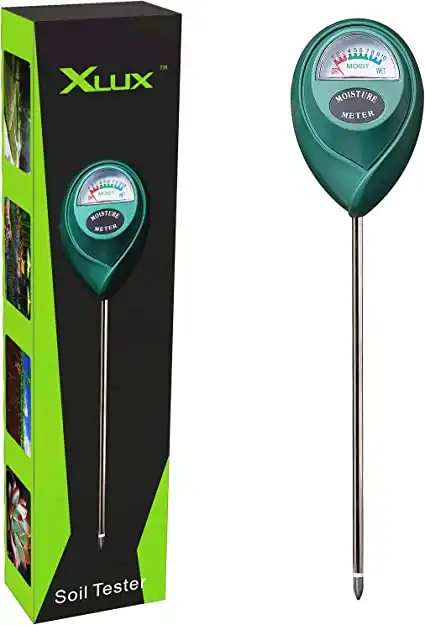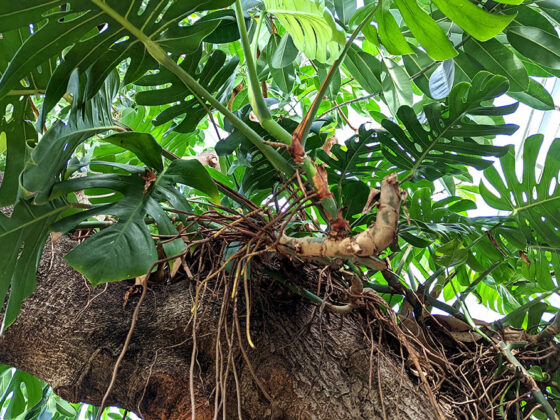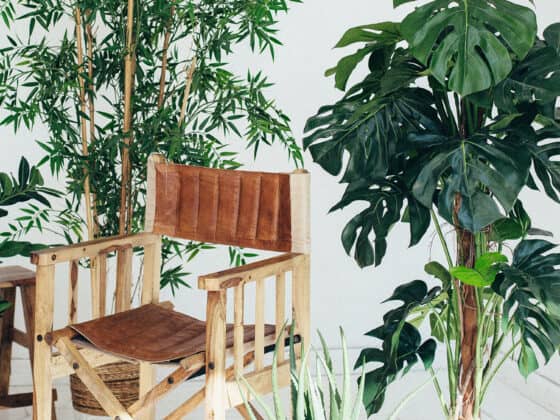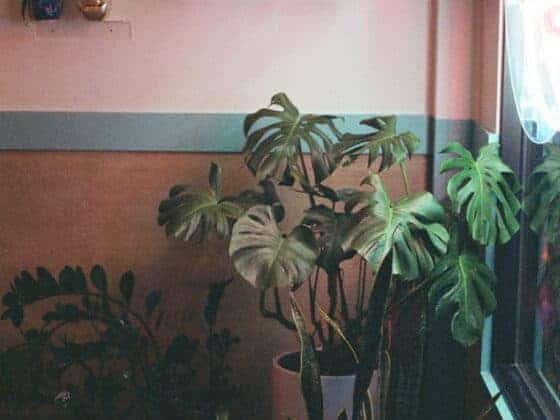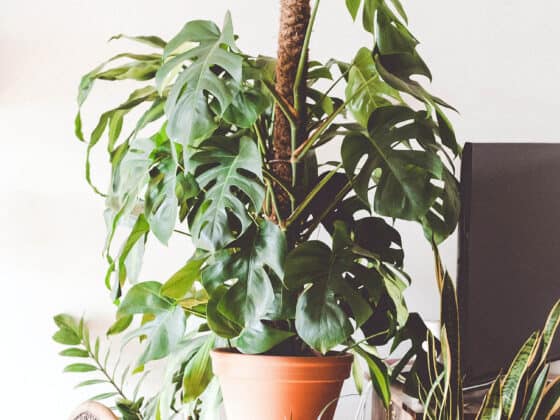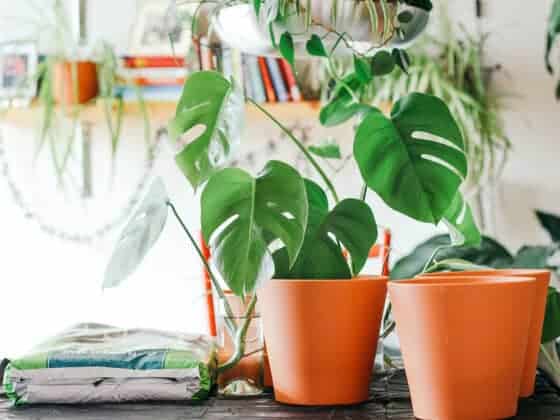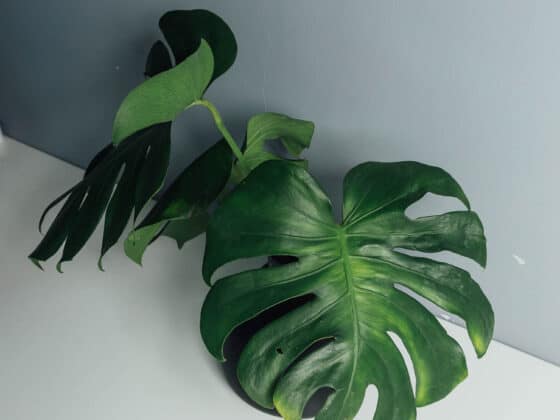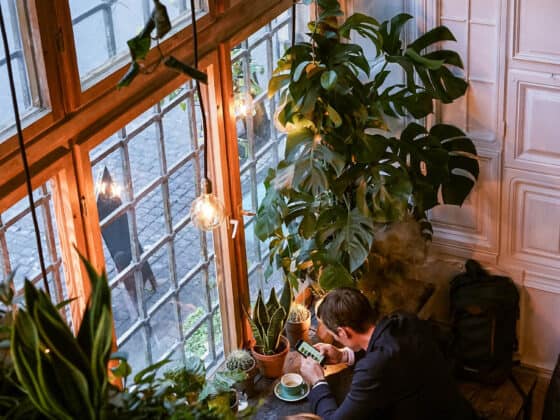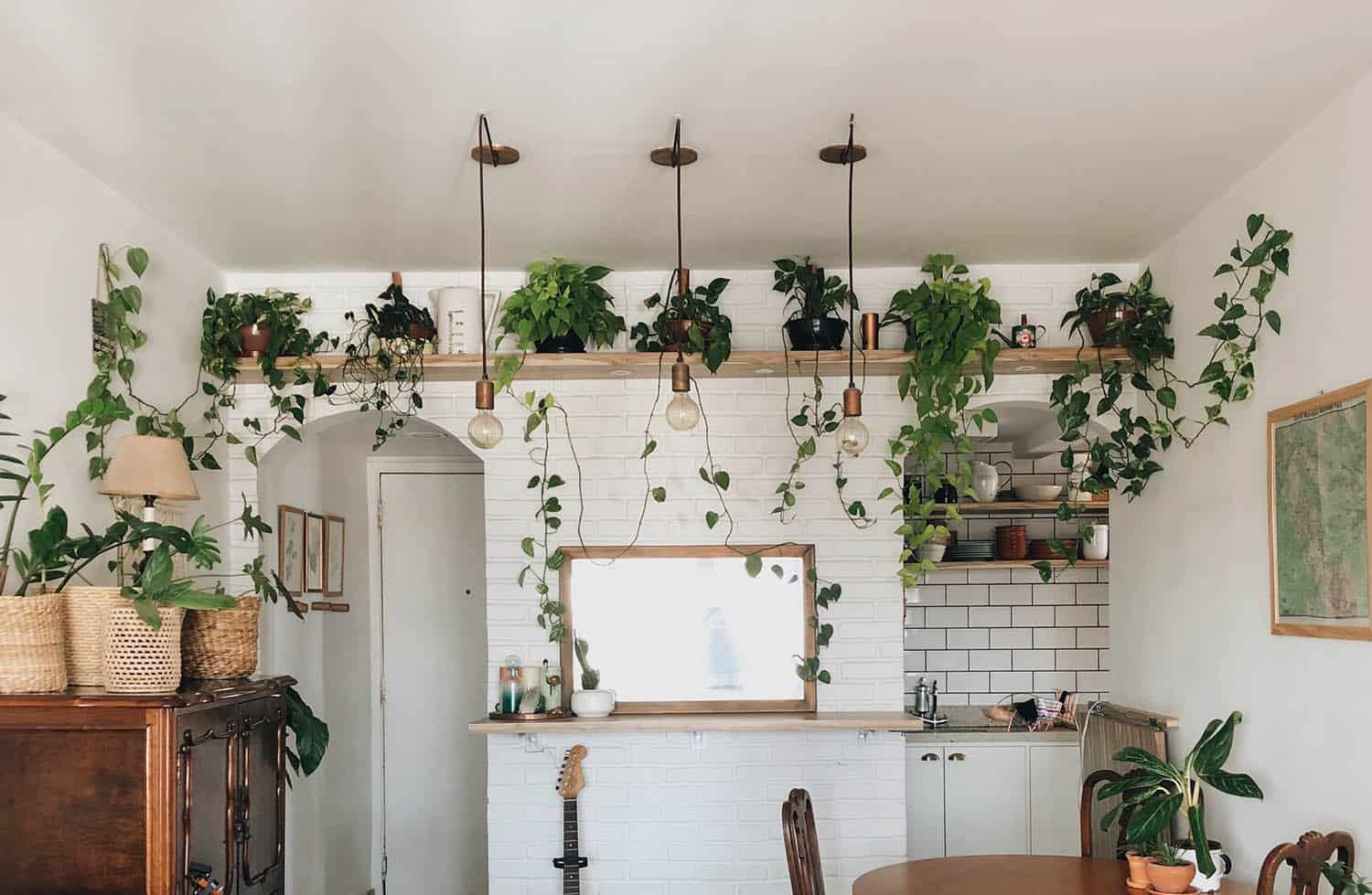If you have ever noticed your Monstera looking like it is crying or dripping water from its leaves, you are not alone. While it might be alarming at first, a “sweating” Monstera is actually a completely normal, common occurrence that happens year-round.
If your Monstera deliciosa is dripping water, don’t panic! Your plant is just experiencing something called guttation, a non-harmful, natural process that occurs for a couple of different reasons.
While this natural process is nothing to worry about, understanding the distinction between guttation, dew, and sticky residue caused by harmful pests is important for making sure your Monstera is happy and healthy. Read on for more information on why your plant is doing this and what, if anything, should be done about it.
Why Monsteras Sweat
Guttation, which is sometimes referred to as “sweating,” “weeping,” or “crying,” is a completely natural process where liquid droplets form on the tips or surface of perfectly healthy leaves. While the droplets look like water, it is actually a combination of excess water and minerals called xylem sap.
Xylem sap is non-toxic and will not harm your furniture or floors; however, if larger plants start guttating and dripping, it can get quite messy.
Guttation happens for a variety of reasons. Typically, it means that your plant has a little more water than it needs and finds a way to get rid of the excess. Plants usually turn off their transpiration processes at night, so in order to get rid of the excess moisture, root pressure will push the moisture, chemicals, sugars, and whatever else upwards through a system of fine channels called phloem. Tiny cells on the surface of the leaf are connected to these channels. They release the excess water and minerals, forming what looks like dewdrops or sweat on the tips of your plant’s leaves.
It is also important to recognize that guttation and transpiration are not the same things. Transpiration happens during the day at high temperatures and occurs when moisture or water leaves the plant in the form of a vapor. Guttation, on the other hand, is xylem sap that is secreted from the plant itself.
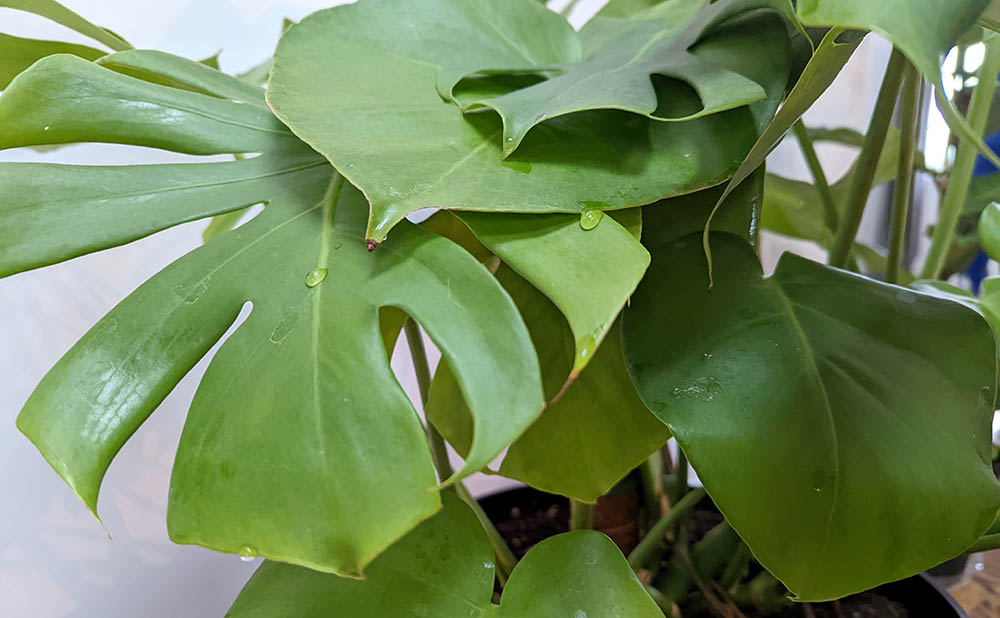
Some say that guttation can also occur as a result of stress or growing conditions that are less than ideal. Even if you are doing everything you can to ensure a happy plant, there are many ways to stress your Monstera. This includes a change in soil or pot size, temperature, or simply even the journey home from the plant nursery.
Adapting to a new environment is a process that some plants handle better than others, and dripping leaves or guttation is one way your Monstera attempts to regulate its growing conditions.
Is Guttation Bad for Monsteras?
While guttation is a natural part of a plant’s life and does not necessarily mean anything is wrong, it does not hurt to do a quick recap of your plant watering and feeding habits to see if something should be adjusted or changed. As every plant mom and or dad knows, each houseplant is unique, and therefore it is important to watch and listen to what they need or want.
Guttation can sometimes be a sign of overwatering as the roots are absorbing too much water. Thankfully, Monsteras are pretty resilient and can withstand a little overwatering and moisture, so this shouldn’t be a problem. That being said, it is still important to listen to your plant and check the soil before watering. Just because Monsteras can withstand overwatering does not mean that they want to.
If the droplets caused by guttation leave white, ink-blot type marks, then it might be a sign that you are over-fertilizing or should switch to a gentler option. It is important to recognize that overfertilizing can be potentially harmful. For instance, if there is excess fertilizer stuck in the xylem, it can sometimes lead to leaf burn.
However, because xylem sap is a combination of minerals and water, sometimes white crust forms naturally and may not be a sign of over-fertilization. To avoid this issue, simply be aware of how much plant food you feed your Monstera, and you should be fine.
Is Guttation the Same as Dew?
Guttation is often mistaken for dew despite being completely different. While guttation is sap being forced out from within the plant, dew is formed through condensation and moisture in the air. During the day, humidity mixes with moisture and then settles in the morning, collecting and condensing on cold surfaces, like plants, in the form of dew drops.
It is also important to note that dew rarely occurs indoors unless your plant is right next to an open window, so if you see water drops forming on the tips of your plant leaves, it is probably just guttation.
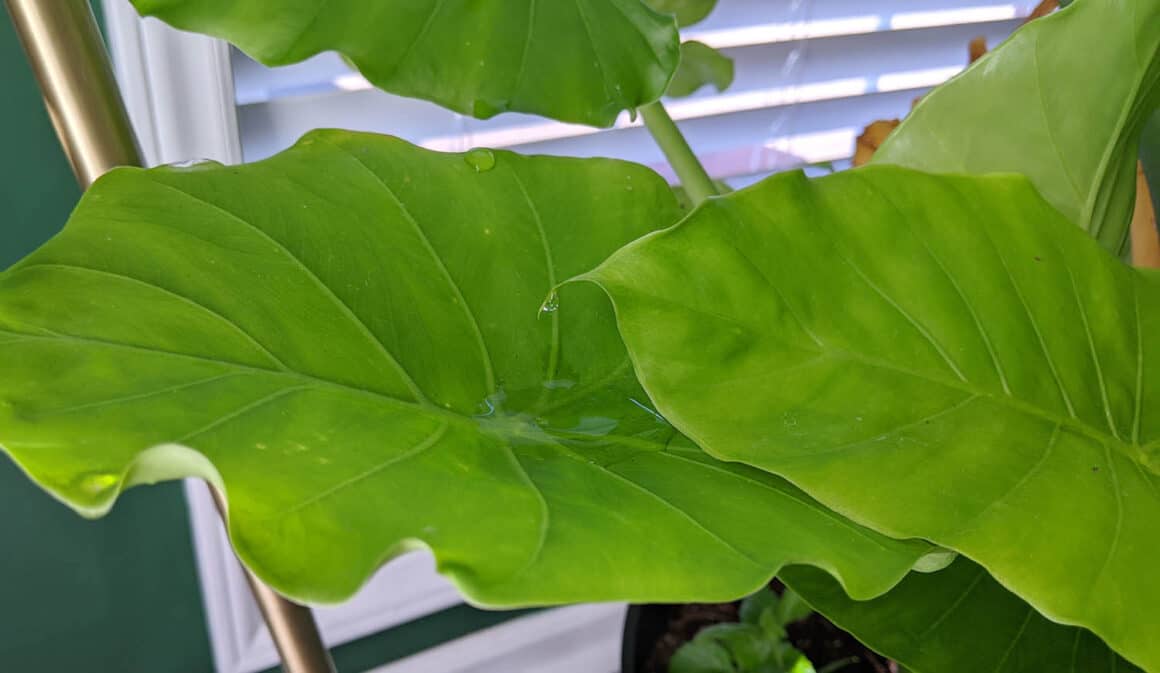
Should You Adjust Your Watering Schedule When You See Guttation?
Because guttation can be a result of overwatering, it is natural to wonder if you should change or adjust your watering habits. Monsteras are fairly hard to kill and are very forgiving of the occasional overwater or underwater. Sometimes, it is hard to tell if your plant is actually unhappy.
As previously mentioned, guttation is not necessarily bad but merely a natural process of life, like sweating, so unless your stems are getting mushy or big, healthy leaves turn yellow, brown, or black, your plant is most likely fine.
That being said, it is still very important to learn how your Monstera wants to be watered. In my own experience, I have found that watering schedules depend on the size of the Monstera, temperature or climate, pot material, and time of year.
For instance, I have a medium-sized, fairly young Monstera Deliciosa in a ceramic pot that has only just begun to fenestrate, and it needs to be watered about once a week. Occasionally my Monstera starts to droop, letting me know it is extra thirsty, and I water accordingly.
Meanwhile, my friend has a baby Monstera that is growing so fast. It loves to be drenched every few days and thoroughly misted daily, so it really just depends.
There are a few rules of thumb when it comes to watering Monsteras. Monsteras are tropical plants that like humidity, moisture, and heat. Most people recommend watering the plant thoroughly until it runs from the drainage hole in the bottom of the pot and to let the soil dry out slightly in between waterings.
To check the soil, simply stick your finger into the dirt. If it feels dry about two inches down, it is time to water. If it feels moist, you can probably wait a few more days. For a more scientific method of measurement, make the small investment into a moisture meter and monitor your plants with that about once per week.
A Quick Note on Pests
Plant pests can leave behind a sticky secretion which sometimes gets confused with guttation. It is important to recognize the difference as pests are harmful and should be dealt with immediately.
The clear, sticky substance left behind by pests is referred to as “honeydew,” and often means mealybugs, mites, or especially scale insects are feeding on your plant. The honeydew sap comes from the sugars and other nutrients within the plant, which the pests feed on and then excrete.
While the honeydew itself is not harmful, the pests feeding on it are slowly weakening and killing the plant. The secretion comes from the insect itself and attracts other bugs that can further harm the plant.
If you notice a sticky substance on the top of your Monstera’s leaves or on stems or other parts, give your plant a thorough examination. If you find any pests, be sure to act quickly to rid your Monstera of any unwanted visitors.
To read more about which types of pests are common to Monsteras, read this article.
Caring For Monsteras
Plant parenthood is a continuous educational journey. Understanding your plant’s quirks and nuances is essential for ensuring a long, happy life. Find comfort in knowing that Monsteras are expressive and will often tell you what they need; you just need to be able to recognize it. Understanding the difference between guttation, dew, and honeydew is a great place to start.






